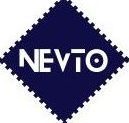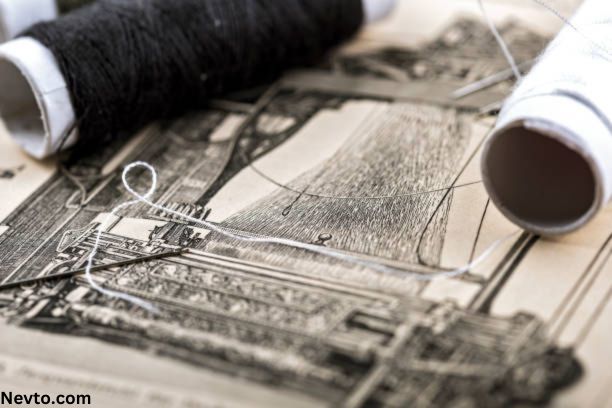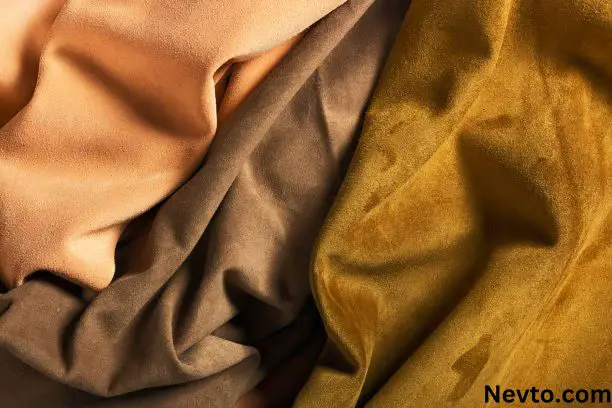Jacquard Fabric: A Unique Textile Woven on Specialized Looms
Jacquard fabric material refers to textiles and cloth produced on mechanical looms that make use of punch playing cards to govern the pattern being woven. This specialized weaving technique makes it possible to create complicated, textured designs that might be extremely difficult or not possible to duplicate by using hand.
Table of Contents
What Is Jacquard Fabric?
The term “jacquard material” comes from the Jacquard loom, invented via Joseph Marie Jacquard in France inside the early 1800s. His device used a series of punched playing cards, every row of which informed the loom what threads to raise because it wove material. This automated the creation of complex woven patterns previously only achieved through tedious handwork.
Although power looms had existed for many years, Jacquard’s modern use of programmable styles revolutionized the fabric enterprise. Fabrics providing floral vines, delicate ferns, paisley designs, tapestry scenes, and extra may want to all of a sudden be industrially produced. Even geometric latticework, brocades, and damasks were infinitely easier to replicate.
Thus, any cloth displaying a woven, textured sample layout is known as a jacquard. It can be comprised of various fibers like cotton, silk, wool, polyester, nylon, rayon, or blends. Jacquard textiles can range significantly in weight, from sheers to heavy brocades.
Key characteristics include:
- Intricate, textured woven designs created by specialized looms
- Floral, paisley, geometric, abstract, and complex motifs
- Various weights, from sheer to brocade
- Range of natural and synthetic fiber contents
- Very versatile with many end uses
A Look Back on the History of Jacquard Looms and Fabric
Weaving cloth by way of hand on a simple loom is a gradual process. Creating styles with any degree of detail takes extreme ability, attention, and diligence. However, around 1790, Joseph Marie Jacquard revolutionized fabric production with the aid of adapting a loom to be managed by means of a sequence of punched cards.
Each card corresponds to at least one row of the design. Thin rods connected the punched holes to mechanical hooks which individually lifted threads in the warp, selectively creating the motifs as the weft was passed through. This semi-automated repeating of the punched patterns enabled vastly more efficiency and precision than human hands were capable of.
The use of Jacquard looms quickly spread across Europe. Skilled designers and punch card artisans supplied weaving mills with rolls of pattern cards. Productivity soared while eliminating the backbreaking toil of handwaving intricate fabrics.
Over the two centuries since, countless jacquard textiles have been created for clothing, decor, upholstery, and more. The fundamental premise remains essentially the same, though modern electronic jacquard machines are computerized for even greater speed, accuracy, and versatility.
Defining Attributes of Jacquard Woven fabric Goods
While individual jacquard fabrics can vary greatly depending on the content and construction, they share fundamental hallmarks that distinguish them from other cloth types.
Multi-layered, Textured Surface
Unlike basic tabby weaves with uniform intersections of horizontal and vertical threads, jacquard looms manipulate each individual warp thread. This enables differing heights across the surface, creating a deeply textured pattern with visual depth.
The “floats” created between motifs stand in obvious contrast against the higher relief designs. Simple fabrics lack such variation in surface height. This adds tonal shading and makes Jacquard visually striking.
Intricate, Repeating Motifs
Jacquard machines excel at reproducing detailed imagery across the entirety of a textile. Whereas hand weavers would be taxed for recreating such finesse again and again, the automated punch card system flawlessly replicates the pattern continuously down the length.
Whether abstract shapes, floral bouquets, paisley elements, complex lattices or scenic vignettes, the essence of jacquard is elaborate repetitive designs.
Versatile Fiber Content and Weight
While brocades and damasks rely on particular jacquard weave fabric structures in silk, cotton, and other finer threads, jacquard is distinguished by the loom mechanism rather than the materials used.
Jacquards appear in gossamer silks, cozy woolens, easygoing cotton, durable poly blends and more. Though intricate patterns suit smoother yarns best, almost any fiber can become jacquard through specialized programming.
Sheer, lightweight varieties up to dense, heavy brocades demonstrate the incredible breadth of jacquard textiles. Read What is Commonly Misdiagnosed as Pink Eye?
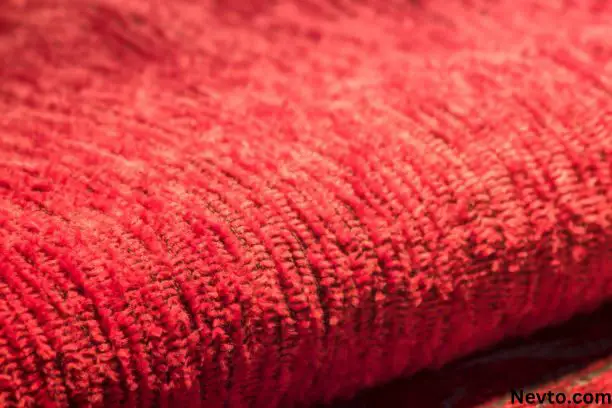
How Jacquard Fabrics Differ from Brocades, Damasks, and Other Fine Textiles?
The phrases jacquard, brocade, and damask are every so often used interchangeably. However, while sharing similar aesthetic qualities, each has distinct definitions.
Jacquard
As established, jacquard refers to the punch card loom mechanism enabling complex woven patterns. Thus, brocades and damasks can be types of jacquard if produced on such equipment. However, jacquard also encompasses simpler, more geometrical cloths.
Brocade
Brocades date back centuries as prized silks and satins intricately woven with gold and silver threads. Today’s brocades utilize such supplementary yarns to create raised vines, floral sprays, and curving layouts against glossy backdrops.
While many brocades rely on jacquard looms, some simpler versions can be created on less specialized equipment.
Damask
Damasks feature tone-on-tone woven designs through contrasting matte and glossy areas. Popular patterns include florals, medallions, and scrolling vines. Traditional damask is reversible due to the yet more complex loom settings required.
Damasks are often jacquard woven fabric. However, some versions are produced with simpler loom mechanisms.
Various Types of Jacquard Fabrics
Modern jacquard machines grant designers incredible freedom with an endless array of possible weaves. From silken songbirds to chunky knits, the main limitation is the creator’s imagination. However, certain common categories help understand the scope of jacquard textiles.
Types by Fiber Content
Jacquard production is not confined to luxury fibers like in olden times. Today, jacquards appear in:
- Silks – Shimmering, finely detailed patterns befitting silk’s smooth, fluid drape.
- Cotton – From crisp shirtings to soft flannels, cotton’s natural comfort in both formal and relaxed looks.
- Woolens – Warmth and versatility with jaunty patterns like houndstooth or textured tweeds.
- Synthetic blends – Polyester, nylon and rayon blends, sometimes mixed with natural fibers. Wrinkle-resistant and budget-friendly.
Blended fibers help balance cost, durability, aesthetics and characteristics like water resistance. Care labels are key when assessing fiber content and properties.
Weights and Textures
Beyond fiber material, jacquards demonstrate great variety in terms of weight, density, and surface interest. For example:
- Sheers – Gauzy and lightweight. Flowing drape with hazy patterns.
- Challis – Softly textured. Graceful floral sprays and vines.
- Brocades – Heavy, glossy fabrics with almost sculptural texture. Intricate motifs like bouquet sprays enhanced by metallic threads.
- Matelassés – Quilted looking, with almost three-dimensional pattern effects. Flowers and medallions seem to rise above the background texture.
- Damasks – Classic tone-on-tone patterns like ornate flowers against differently textured but similar-colored grounds. Crisp table linens are a common application.
- Tapestry – Heavier hand-woven style jacquards that recreate elaborate pictorial scenes. Deeply textured with a rustic, dimensional feel.
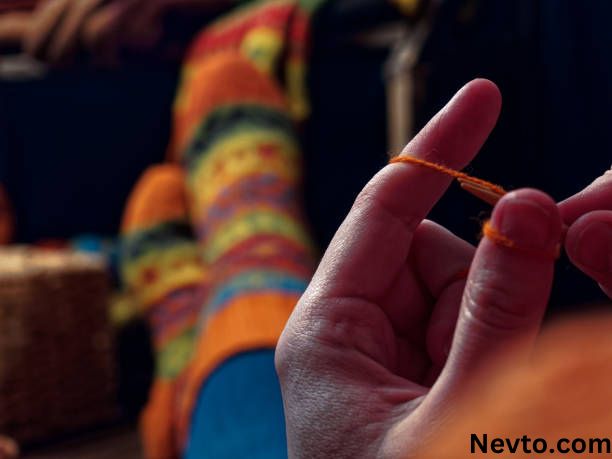
Jacquard Weave Fabric Structure Variations
While the loom mechanics differentiate jacquards, weavers additionally experiment with stitch manipulations, creating unique cloth. Some examples include:
- Double cloth – Two distinct layers woven simultaneously. Reversible with different patterns on every face.
- Piqué – Textured cottons woven using heavy filler yarns raised in looped or knobbed effects. Popular in polos and some bedding.
- Dobby – More simply patterned than jacquard but still involving special loom hookups to enable simple geometric grids, stripes and checks.
- Compound – Blends multiple basic weave structures together in the same fabric. For example, twill and satin. This adds further diversity to the cloth.
The intricacy of jacquard patterning seems limitless when weavers additionally incorporate special stitching techniques.
Common Motifs and Designs Seen on Jacquard Fabrics
While virtually any motif imaginable can be reproduced with jacquard weaving, certain aesthetic styles appear more frequently. These patterns often correlate to ancestral textile traditions still influencing modern fashions.
Floral Jacquards
Florals enjoy enduring popularity as jacquard designs. Stylized blooms and winding vines have adorned elegant silks for centuries. Even today, floral jacquards signify beauty and femininity in apparel, decor and gifts.
Common floral motifs include:
- Bouquets and nosegays with cut flowers and colorful ribbons
- Scrolling vines and botanical branches with leaves, tendrils and buds
- Expansive garden style arrangements with varied bloom shapes and sizes intermingling
- Individual floral sprays, such as rose, peony, tulip, iris or lily for a bold splash
- Delicate scattered posies as allover patterns on lighter fabrics
Weavers recreate flower motifs with remarkable realism through subtle color shading and textural depth unique to jacquard looms.
Paisley Patterns
Another perennial jacquard favorite, paisley designs demonstrate the global influence on textile arts over history.
Elements of traditional paisley motifs include:
- Teardrop and comma shape reminiscent of a curling cypress frond
- Plumes and leafy forms seem to sprout from the paisley’s top
- Color blending within each shape replicates the play of light across a plant
- Repeating patterns interlocking horizontally and vertically across the cloth
Originally known as boteh from old Persian designs, paisley remains a cultured pattern gracing apparel and decor.
Modern interpretations sometimes showcase oversized paisleys, abstract variations or standout colors feeding the timeless appeal.
Geometric and Abstract Designs
Beyond floral and foliate layouts, jacquard machines excel at geometric arrangements and abstract shapes. The precise accuracy in pattern repetition makes such mathematical designs especially striking.
Some examples include:
- Latticework of diverse polygons building from squares to octagons
- Tessellated patterns interlinking shapes without gaps or overlaps
- Optical illusions with contrasting graphic prints seeming to flicker or vibrate
- Ethnic motifs like Native American star quilts or African Adinkra symbols
- Contemporary graphics mixing modern art influence with tech-inspired prints
Aboriginal dot art, Art Deco ziggurats, Navajo rugs, tartan plaids — jacquard looms freely reinterpret any cultural design conceivable. This fusion of old and new makes for engaging fabrics. Read Al-Hamra Mosque, Fes, Morocco – All about to know
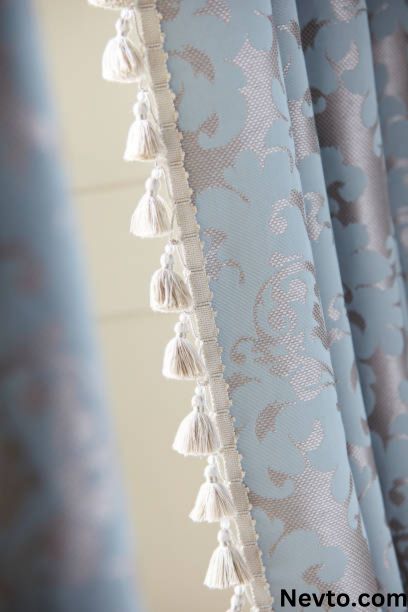
Where to Find Jacquard Fabrics Used?
Beyond the factories where they originate, jacquard textiles go on to diverse destinations before reaching the eventual consumer. Some avenues where jacquards play major roles:
As Apparel and Fashion Fabrics
Clothing and accessories rely extensively on jacquards to add intrigue. From haute couture gowns to retail blouses, jacquard patterns captivate across seasons. They catch light beautifully in movement, whether cut for sophisticated tailoring or breezy forms.
Specific uses include:
- Cocktail dresses and eveningwear with metallic brocades or silk jacquards
- Blazers, overcoats and jacket linings in wool, cashmere and blends
- Skirts and blouses featuring lively motifs like floral vines or paisleys
- Ties and scarves with sheen and colorful interest
- Handbags mixing jacquard paneling with leather, linen or canvas
- Formalwear including embroidered luxury sarees and ornate cocktail attire
Ruched, draped, pleated or gently tailored — few fabrics surpass jacquard’s ability to flatter the figure.
Upholstered Furnishings and Soft Home Décor
For interior design aficionados, few textiles equal jacquards for upscale appeal. Their ornate beauty readily sets a cultured mood in spaces like:
- Parlor seating boasting vintage revival patterns to evoke past eras
- Bedding sets turning bedrooms into personal sanctuaries with soothing motifs
- Window treatments augmenting interiors’ atmosphere through light filtration and privacy
- Table linens like jacquard tablecloths to set refined dining scenes
- Tasseled throw pillows provide punches of color alongside ornate furniture
- Tapestries lend a regal air in addition to their sound muffling abilities
Jacquards refine rooms with texture and old-world grace — a design darling for good reason.
Fashion Accessories and Unique Home Accents
Beyond attire and décor, jacquards also shine through:
- Scarves gift wrapped as presents or topping outfits with panache
- Yarmulkes and ceremonial fabrics honoring customs
- Statement jewelry like gem-studded brooches
- Ornate hand fans fluttering allure at costumed events
- Whimsical stuffed animals and decorative dolls
- Eye masks and headbands for quirky flair
- Yoga bags carrying exercise essentials with chic style
- Pet apparel like tiny coats for sweater weather
Resourceful artisans keep discovering new applications for jacquard originality.
The Pros and Cons of Selecting Jacquard Fabrics
For all their visual virtues, jacquards also have limitations worth noting. As with any textile, the positives and negatives depend on your priorities.
Advantages of Jacquard Fabrics
- Elaborate motifs – Intricate patterns like florals transcend basic prints or solids in flair. Jacquards make statements.
- Luxurious textures – Multiple levels across jacquards’ surfaces add literally tactile appeal. The designs practically leap from the cloth.
- Heirloom quality – Timelessness radiates through jacquards with their artisanal essence. Many become family treasures passed between generations.
- Multifunctional utility – From blouses to blankets, few fabrics multitask like jacquards. Their versatility expands options.
- Conversation piece – Be prepared for compliments! Jacquards attract attention for their beauty and workmanship.
Downsides to Consider
- Cost – Superior labor and materials plus slower production Equates to higher pricing. Budget accordingly for jacquard’s luxe status.
- Delicate care – Intricate fabrics warrant extra caution During cleaning and handling to preserve their integrity over decades.
- Shrinkage or bleeding – Natural fibers especially risk these issues. Check labels to assess properties and launder accordingly.
- Snags – Catching rings or sharp objects can damage jacquard’s surfaces. Handle gently and immediately address any pulls.
As with any specialized textile, weigh jacquard’s plentiful perks against extra care and investment needed.
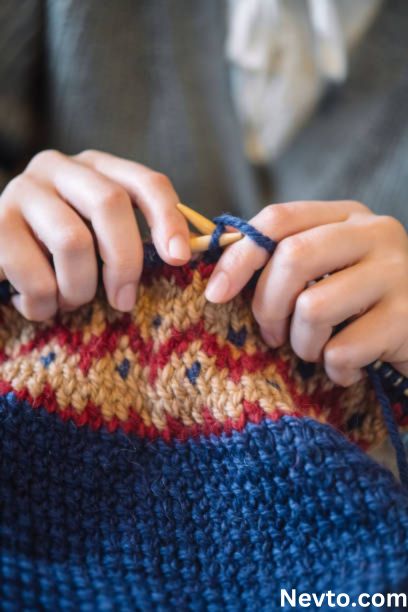
Caring for Jacquard Fabrics
While today’s synthetic blends simplify laundering, natural jacquards and delicate constructions still require gentle handling. Follow these tips to enjoy jacquards longer:
Washing Methods
Always refer to garment labels for exact recommendations. When uncertain, default to:
- Dry cleaning for silk, wool, or embellished jacquards
- Hand wash in cool water using mild detergent for cottons and other hardy fibers
- Machine wash gentle cycle on cold for poly-blends; air dry to prevent heat damage
- Steam press on reverse side instead of ironing to avoid crushing any pile
- Never bleach, over-agitate, or machine dry without checking fabric type first.
Stain Treatment
Address spots immediately before drying by dabbing gently with a soft cloth. Avoid rubbing or saturating the area. Given intricate patterns, jacquards can hide stains well until laundering.
For food, cosmetic or similar stains on sturdy cotton jacquards, try an enzymatic pre-soak like OxiClean or Carbona. Then launder as usual.
However, play safer with heirloom textiles by calling a specialty dry cleaner for guidance. Professionals have specialized spotting chemistry to lift stains without disturbing dyes or fibers. Let the experts handle grandmother’s beloved tablecloth or great aunt Millie’s vintage jacket.
Storage and Handling
Proper storage and handling prevent damage between wearings, extending a jacquard’s lifespan.
When hanging:
- Use padded hangers to avoid stress points on shoulder seams
- Allow ample space between garments
- Zip or button closure to take weight off hanging threads
When folded:
- Refold along original creases if possible to avoid fractures
- Insert acid-free tissue between layers
- Top with archival box to shield from dust and light
During wear:
- Add protective camisoles or slips as first layer
- Detach belts, bags and accessories that may snag
- Button or zip fully; loose threads catch easily
- Blot spills quickly with cloth napkin; do not scrub
With some basic diligence, your jacquard pieces should endure for generations appreciating like heirlooms.
Noteworthy Trends to Watch in the Jacquard Industry
This heritage technique remains integral for designers to actualize creative visions. Alongside sustained interest in jacquard across eras, some emerging trends bear watching.
Harnessing Technology for Unorthodox Effects
Computerized digital printing broadens options with photorealism and razor sharp detail once impossible. Complex mutlifaceted jacquards emerge fresh off the loom with stunning depth.
Additionally, innovations like 3D woven shaping construct textiles with contours and architecture undreamt of in Jacquard’s era. Drapes take on literal new dimensions.
Prioritizing Eco-Responsibility
Consumers increasingly demand accountability in production ethics and impacts. Response includes greener equipment, renewable or recycled yarns, and transparent supply chains.
For centuries, artisan textiles epitomized sustainability before the term even existed. Jacquard looms exemplify machinery maximizing human creativity through exceptional craftsmanship with minimal waste.
Exploring New Applications
Designers discover novel ways to highlight jacquard’s virtues as tech-couture, activewear and high-performance textiles catch on. Market niches expand beyond formal fashions into uncharted territories.
Moreover, high-low pairings mix jacquards with unexpected mates like denim or rubber for fresh juxtapositions. Couturiers grow ever more fearless in mining jacquard’s possibilities.
Jacquard’s past and future stay woven together as loyal fans and innovators propel the legacy onward.
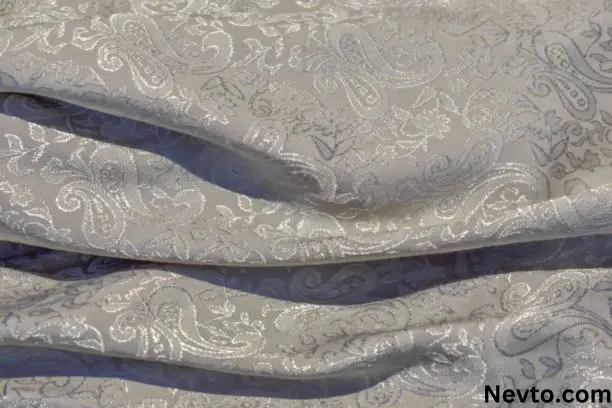
FAQ’s
Q: How much does jacquard fabric typically cost compared to regular woven cloth?
A: Due to the labor intensity and specialized equipment involved, jacquard cloth usually retails for two to four times more per yard than basic fabrics like broadcloth or twill. However, prices run the gamut based on factors like fiber content, construction quality, intricacy and designer cache.
Q: What’s the difference between brocade and jacquard?
A: While often used interchangeably, brocade refers to supplemental decorative threads like metallic fibers woven across the surface. Jacquard denotes the punch card loom able to produce intricate patterning. So brocades can be considered a type of jacquard.
Q: How do you clean delicate silk jacquard fabrics?
A: Check the garment tag first, but in most cases, dry cleaning is best for silk jacquards to prevent shrinking, dye bleeding or damage through home methods. Wet silk is extremely fragile. Entrust specialist cleaners to safely handle cherished heirlooms or investment pieces.
Q: Can you bleach cotton jacquard fabrics?
A: Avoid bleaching colored cotton jacquards, as you risk altering or removing dyes. For whites, non-chlorine oxygen bleach is gentler. But assess fiber content and construction quality before attempting any chemical processing. When uncertain, default to professional dry cleaning.
Q: What’s an easy way to sew jacquard fabrics?
A: Choose needle types and sizes suited to the given fibers, such as sharps for wovens. Use longer stitch length settings to traverse the bumpy thickness. Employ tools like roller presser feet, adhesive spray baste and stabilizers as needed to prevent shifting. Take it slowly, and let the jacquard’s beauty shine!
Jacquard fabrics make magical additions to any sewing room or outfit. Their versatility spanning eras and elegance traversing cultures cements their ongoing fame. With some basic handling care, jacquards endure forlifetimes.
